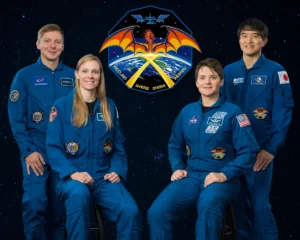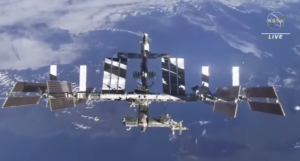NASA Switches Crew Dragons Allowing Butch and Suni to Come Home a Couple Weeks Sooner
NASA confirmed today they will use an existing SpaceX Crew Dragon for the next routine crew replacement at the International Space Station, Crew-10, instead of a new one. The swap allows Crew-9 to come home about two weeks sooner than the most recent plan. Two of the four members of Crew-9, Butch Wilmore and Suni Williams, have been on ISS longer than expected because of problems with the Boeing Starliner capsule that brought them there, but more recently their stay was extended because SpaceX’s new crew capsule is not ready.
NASA now is targeting March 12 for the launch of Crew-10 from Kennedy Space Center. It usually takes about a day to reach the ISS from Florida. NASA schedules a 5-day handover between arriving and departing crews, so Crew-9 would come home around March 18, weather permitting.
Originally Crew-10 was supposed to launch this month on a brand new SpaceX Crew Dragon. SpaceX has four operational Crew Dragons, but decided to build a fifth and Crew-10 was to be its inaugural flight. NASA announced in December, however, that the new capsule wasn’t ready and the crew change-over would slip to late March.

The ISS has been permanently occupied by international crews rotating on roughly six-month intervals for more than 24 years since November 2, 2000. “Roughly” is a key word because there have been a number of instances where spacecraft failures, including the 2003 Space Shuttle Columbia tragedy and the 2022 Soyuz MS-22 coolant leak, or other factors led to unexpected extended crew durations.
The U.S. decision to terminate the Space Shuttle program in 2011 meant NASA had to pay Russia to transport astronauts to and from the ISS for nine years. SpaceX restored America’s ability to launch American astronauts from American soil in 2020 with its crewed flight test, Demo-2. SpaceX has routinely launched NASA-sponsored international crews to the ISS ever since on its four existing Crew Dragons: Endeavour, Resilience, Endurance, and Freedom.
SpaceX not only launches people into space for NASA, but for private astronauts. Five such flights have taken place already — Inspiration4 and Polaris Dawn for Jared Isaacman (who’s been nominated to be the new NASA Administrator) and three for Axiom Space. More are on the books. Based on demand, SpaceX decided to build an as-yet-unnamed fifth capsule with its first flight targeted for NASA’s Crew-10 mission this month.
In December, NASA indicated the capsule would not be ready in time and they were delaying that launch, and hence the return of Crew-9, until the end of March.
Crew-9 includes NASA astronauts Butch Wilmore and Suni Williams. They arrived at ISS on June 6, 2024 on the Crew Flight Test of Boeing’s Starliner spacecraft. Propulsion system anomalies led NASA to conclude the spacecraft wasn’t safe enough to bring them home. Starliner returned to Earth safely with no one aboard.

NASA reconfigured Crew-9, making Butch and Suni two of its four members. Suni now is the commander of ISS and recently conducted two spacewalks, the second with Butch. NASA’s Nick Hague and Roscosmos’s Aleksandr Gorbunov are the other two members of Crew-9.
Despite assertions that Butch and Suni are “stranded” or “abandoned,” they can come home any time. Crew Dragon Freedom is parked at the ISS right now and can bring them back to Earth in an instant. NASA and Roscosmos always have enough spacecraft docked at the ISS to bring everyone safely back home in an emergency.
In a February 7 interview with CBS News, Suni pushed back on the “abandoned” narrative, saying she and Butch are part of a team and honored to be there.
She and Butch are still there because they are waiting for their replacements to arrive on Crew-10.

Today NASA said the new Crew Dragon that was to deliver Crew-10 still needs more time, but not how much longer it will be. Instead, they and SpaceX agreed to substitute Crew Dragon Endurance.
“The change also will allow SpaceX, which owns and operates the Dragon fleet, to complete the new spacecraft’s interior build and perform final integration activities, while simultaneously launching Crew-10 and returning Crew-9 sooner.” — NASA
NASA cautioned the March 12 launch date depends on completion of the agency’s flight readiness review process for Endurance.

The ISS is a partnership among the United States, Russia, Canada, Japan, and 11 European countries working through the European Space Agency. The Russian and U.S. segments are interdependent. The Russian segment periodically reboosts the ISS’s orbit to compensate for atmospheric drag. The U.S. segment provides electrical power for both sides.

User Comments
SpacePolicyOnline.com has the right (but not the obligation) to monitor the comments and to remove any materials it deems inappropriate. We do not post comments that include links to other websites since we have no control over that content nor can we verify the security of such links.